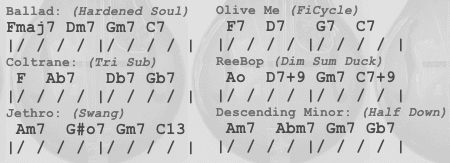« August 2009 |
Main
| October 2009 »
 September 24, 2009 | Sitting on the edge of their seats
September 24, 2009 | Sitting on the edge of their seats
The teacher walks to the front of her rowdy fifth graders, taking her position silently midst the boisterous pre-teen pandemonium, face assuming a deadpan seriousness, as the ambient noise starts to drop from the air like wounded WWII bombers. One by one, the class members stop their activity and turn their full attention to her, some literally at the edge of their seat in anticipation of her next move.
She has their attention now, and notice she did not fight noise with even louder noise. Her twenty-five plus years experience had taught her early in her career that she could never compete with twenty-four screaming vessels of pre-adolescent hormones. This approach was not only easier on her voice and nerves, it really modeled for her class the sensitivity they would need to absorb the morning and afternoon's pedagogy. Teaching is a marathon, not a sprint. For her, effectiveness meant it couldn't even be a long series of sprints.

Performing for an audience is like teaching. You need their attention, and though louder/faster/higher certainly is one way of claiming it, the impact is short-lived. A church youth pastor described the phenomenon this way, "I'm continually working with a 'three-worm crowd.' You can eat two worms in front of them, but by the time you chew the third, you've probably already lost their attention." The better way, assuming you really are in an environment to get their interest (certainly in some Bluegrass jams this might be impossible), using sparseness and subtlety in dynamics is a whole lot better way of achieving audience focus. Plus, it's a much better aesthetic experience for both audience AND perfomer.
What are the elements you can use to earn their focus?
Silence: Strategic long rests can be a good thing. Giving the audience a break allows their concentration to regroup, to clean the slate. It's also an effective contrast from the "busy" you will incorporate later. Even midstream "space" gives the mind a chance to absorb all the great things you are playing.
Expression: Dynamics are a good thing. It's easy to go on autopilot and play at the same level of volume, a huge mistake for the novice. Accents, crescendos, sforzandos, all 'em Eye-talian words you learned in elementary school still mean something.
Articulations: Tremolos, hammer-ons, pull-offs, these are all the really cool things you can do with finger and pick to make the music interesting. All downstrokes make for very dull listening. Give it some spice.
In the long run, it's subtlety that commands attention. If you really want your audience to listen, you'll use it!
Further:
Is it pretty?
Signature Tone
Dynamic Results
Real Swell...
An object in motion...
Posted by Ted at 12:37 PM
 September 17, 2009 | Applying Turnarounds
September 17, 2009 | Applying Turnarounds
If you were about to sit down for an extended break to read a book or the newspaper, you might do a few things in preparation. You might refill your coffee mug, take a look out the window to check the weather, make sure you don't have any phone messages, clear clutter off the couch where you are about to sit, or turn the background music softer so you can concentrate. These are any number of actions that aren't actually the act of sitting down or reading, but one of preparing for a long period of "stability."
Bluegrass and jazz musicians have something in common in that they take a song or chorus, and improvise over the same set of changes, sometimes ad nauseum. You start off in a key, you end in that same key. In order to make each return to the beginning sound "fresh," a good understanding of the implementation of Turnarounds can give your improvisation (and comping) new life. It can be a simple as hitting the V7 or Dominant chord of the key, or as complex as a set of tritone subs inserted in a string of secondary dominants. (Huh?)
We touch in our Blues 501 page the notion of Turnarounds, but very briefly. If you blinked, you might have missed it. There's a little more depth in the "Getting Into Jazz Mandolin" book (not-so shameless plug...), and we won't rehash it here. It's worth a visit to this ancient archive:
Blues 501

A word of caution here--you can get intimidated by a rash of deep music theory terms, or you can simply get out your mandolin and just play through the chords, enjoy them for their sound, never minding the labels or terminology. It all comes back to the ear anyway, but once you do get the sound, it is nice to eventually get a grip on how to duplicate this in multiple keys.
Okay, "Ask me the time, and I'll tell you how to build a watch." That's not what we want to accomplish here; we just want to get you some new, repeatable concepts that might take months or years to completely digest in full depth.
Our friend and jazz mandolin mentor, Paul Glasse brought to our attention a terrific online article by Dr. Matthew Warnick, "Turnarounds: How to Turn One Chord into Four" at goes into much more detail, explaining heavier concepts like secondary dominants and tritone subs. Again, you might not be ready for the deeper theory, but don't let this scare you. If you just play through the chords in the one key it's presented in (key of C), you can transpose this into others, and apply to songs you already know.
Read Jazz Guitar Online article: Turnarounds: How to Turn One Chord into Four
Another thing about Turnarounds is they aren't just for the end of the song. You can also use them at the ends of phrases, and even take the concept deeper into the song itself and start applying chord substitutions in more harmonically stagnant parts of the music. See what we did with a traditional fiddle tune, Red Lion Hornpipe , AKA "Carpal Tunnel Hornpipe." This is all about the Turnaround.
Further:
Circle of Fifths
Secondary Dominants
Jazzed Pentatonics
FFcP Testimony
Posted by Ted at 9:12 AM
 September 10, 2009 | 4 and 7. The Committal Notes.
September 10, 2009 | 4 and 7. The Committal Notes.
We've explored the notion of note significance within the Major and Minor Scale. Our emphasis has always been on the importance of identifying and communicating the chord tones, in other words, expressing the vertical or harmonic qualities of the music. Thinking chords is very important, but another concept is categorizing the notes in between the chord tones. We can broadly label these as "passing tones," but we should also recognize that these can be further categorized as "benign" or "committal."
The first is easy. Benign notes are just filler notes that don't really require a definite chord tone follow up. Think the 2nd (better, the 9th) and you have a note that you could just as easily sit on in more contemporary genres, jazz and pop music. The 6th is also gentle note that at worst, demands no compelling resolution, at best, offers significant flavor in the form of a Maj6th chord, highly used in Western Swing and Brazilian Choro. It can be inserted willy nilly, with little recourse.
The second class requires a response, the "committal" tones of the 4th and 7th scale degrees. This category of passing tones can't really end a phrase, and left unresolved, virtually exposes a musician's incompetence. Try it sometime. Play a major chord, fool around with notes of it's major scale and end on the 4th or the 7th. There's tension that needs attention.

Why is this significant? Take a close look at the Major Pentatonic Scale, 1, 2, 3, 5, 6. These committal tones are conspicuously absent, and for the Folk/Bluegrass musician that depends on Pentatonics for improvisation fodder, a huge element of horizontal drive is absent, without these committal tones, 4 and 7. Sure, you can express the chord, but you're not propelling the melody without these guys.
Gravity is good. Learn to identify these notes in your scale practicing, and listen closely to the call and response qualities of these indivdual tones. Your soloing will be significantly more compelling if you can exploit their dynamic nature.
Further:
Critical Decisions in Improvising: 'Gravity' Notes
Jazzed Pentatonics
The blur between intent and mistake
Harmonic Implication
More Appropriate
Posted by Ted at 8:05 AM
 September 3, 2009 | Why I like Chris Thile
September 3, 2009 | Why I like Chris Thile
Everyone is dazzled by stars. The superhuman powers of true musical genius can take your breath away sometimes. The problem is, we often mistake the flash for wizard trickery, writing off the experience as observing some kind of freak show, and we completely miss the true musicality. This is commonly the case dissecting and analyzing the playing of mandolinist virtuoso Chris Thile.
 As a boy, it was obvious he had prodigy potential, and the multiple decades of practicing, touring, exchanging with other world class players has honed him to legendary status, even at a relatively young age. Most noticed is the incredible speed, the capacity for memory, and his ability to keep pace with any premier performer. What is arguably his most important talent, and one even us average players can learn from is not the unattainable speed, but the uncanny ability to fit the mandolin into the rest of the ensemble. As a boy, it was obvious he had prodigy potential, and the multiple decades of practicing, touring, exchanging with other world class players has honed him to legendary status, even at a relatively young age. Most noticed is the incredible speed, the capacity for memory, and his ability to keep pace with any premier performer. What is arguably his most important talent, and one even us average players can learn from is not the unattainable speed, but the uncanny ability to fit the mandolin into the rest of the ensemble.
Thile's Nickel Creek years with his fellow childhood bandmates, Sara and Sean Watkins are textbook examples of how a mandolin can not only fit in, but support the ensemble's energy and aesthetic, artistic message. These are the tidbits you should glean after a close listen to some of the Nickel Creek discography:
He always supports the rest of the ensemble. Sure, there are the moments of herculean display, but his true virtue is what he does to back the band, the quiet, steady pulse that retains a melodic integrity. It does not trump, it complements.
He adds energy through rhythmic subdivision. Through apposite cross picking patterns, playing the beat's subdivisions (16ths instead of 8ths), the band is pushed forward. Guitar/mandolinist converts often ignore this potential of the mandolin. It should not just be strummed like a guitar. Playing simple arpeggios double time (softly!) yields a drive that can never be accomplished by simple chord strumming. This is especially important if the band already has a guitar. The mandolin at soft levels becomes a veritable pair of tightly tuned maracas.
He injects appropriate fills at the ends of phrases. These little melodic tidbits are tasteful and never the product of musician bravado or ego. He exploits space as much as injecting intensity; when he's not soloing, he's complementing at softer dynamic levels.
He uses interesting chord vocabularies and extensions. Nickel Creek is scorned by traditionalists for abandoning common Bluegrass harmonic vocabularies. Thile combines the Old School bluegrass conventions with new sounds, injecting jazz chords and classical motifs. He pushes boundaries of harmony with delight.
He uses thematic material consistently. He's great at not only creating "riffs," he uses them with consistency. Think of the Princess Leia theme in the Star Wars movies, or any Wagnerian opera in which a short phrase or motif recurs, helping to "tag" the character. There's something comforting in a recognizable, repeatable theme, and Thile creates them regularly in his accompaniment. Think of the mandolin introduction to "This Side," how this very simple phrase returns you "home" through the entire song, exploring, wandering and then coming back.
We love our stars, but it's the behind-the-scenes stuff we can study and take home with us. The unattainable musicianship is entertaining, but it's the aforementioned attainable stuff we can take home with us and improve our own playing.

Further
Mandolin Cafe: Chris Thile Interview
What's a mandolin sound like?
10,000 hours? Discipline... in moderation.
World's Best Musician
Reason's why
Nickel Creek
Posted by Ted at 8:39 AM

Disclaimer: In the 'Information Age' of the 21st Century,
any fool with a computer, a modem, and an idea can
become a self-professed 'expert." This site does not
come equipped with 'discernment.'
|



